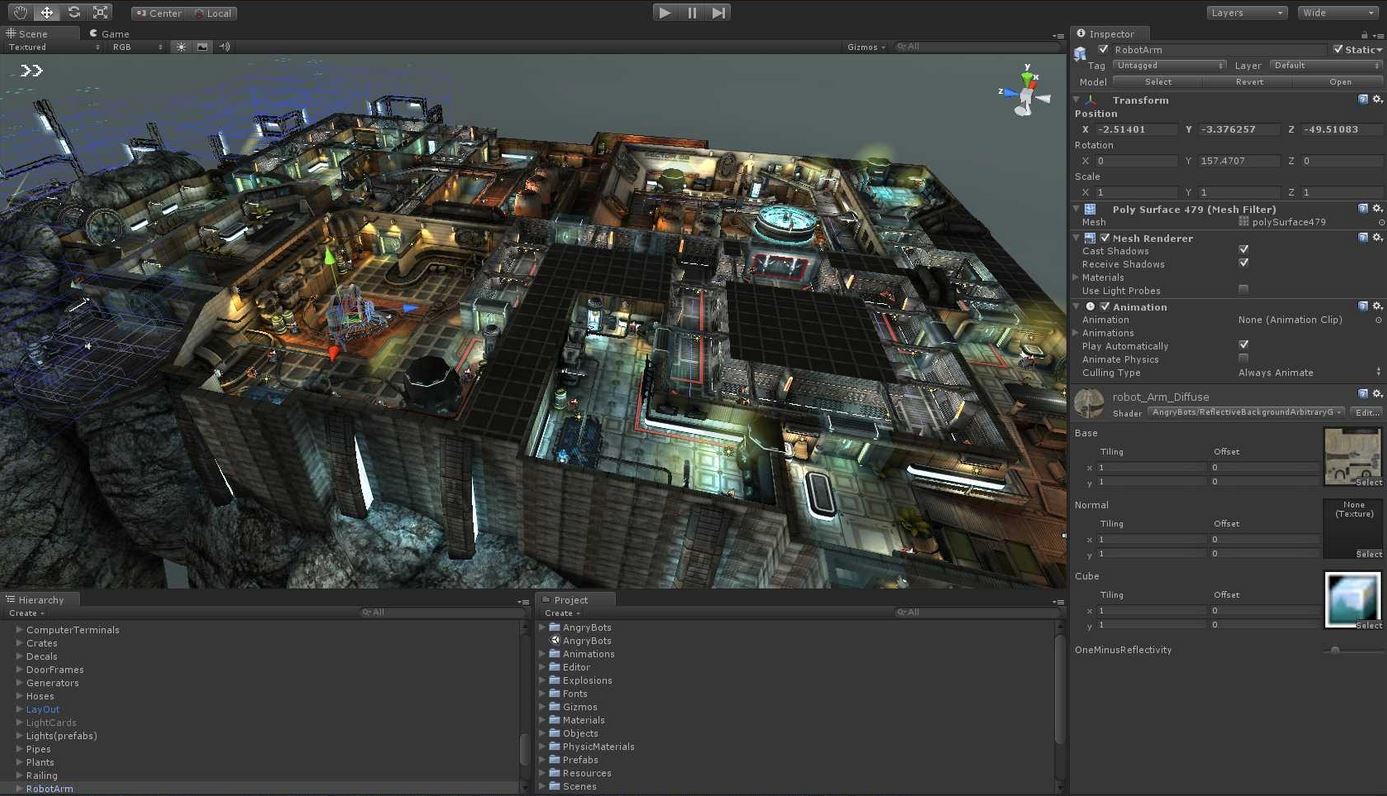


By splitting the thinking process into data, interface, and decisions, developers can reduce the number of source files that must be searched in order to add or fix functionality.
#UNITY 3D GAME DESIGN SOFTWARE#
This methodology introduces another abstraction layer that will help with the software planning, and also allow new programmers to navigate even in a bigger codebase. These actions clearly show the compatibility of these applications with MVC. Game and UI development have the usual workflow of waiting for a user’s input, or other triggering condition, sending notification of those events somewhere appropriate, deciding what to do in response, and updating the data accordingly. MVC is flexible enough to be implemented even on top of ECS or OOP. The Model-View-Controller pattern (MVC) splits the software into three major components: Models (Data CRUD), Views (Interface/Detection) and Controllers (Decision/Action). Finally, some elements are responsible for receiving these notifications, making business logic decisions, and deciding how the data should be manipulated.įortunately, we already have a pattern that behaves in this exact way.Others implement the interface for other elements to interact with, detecting events related to their scope and triggering notifications when they occur.Some handle the raw data, allowing it to be created, read, updated, deleted or searched (i.e., the CRUD concept).For example, one way I like to think about software is to divide it up into three different categories: One way to avoid a mess is to impose some additional guidelines on top of Entity-Component. defeat-modal ĮC is a good pattern for alleviating the problems of multiple inheritance, where a complex class structure can introduce problems like the diamond problem where a class D, inheriting two classes, B and C, with the same base class A, can introduce conflicts because how B and C modify A’s features differently. Let’s depict an Entity like this: some-entity In more “programmer” terms, an Entity can be an object with an array of 0 or more Components. The Entity-Component PatternĮntity-Component (EC) is a design pattern where we first define the hierarchy of elements that make up the application (Entities), and later, we define the features and data each will contain (Components). Thus, this article isn’t meant to be the ultimate solution to your problem, but rather, to show the benefits and possibilities of two well-known patterns: Entity-Component and Model-View-Controller. This “freedom of programming” is proof that we haven’t yet found a single, definitive method for designing software. Even though they have a set of rules, developers will usually do a little rule-bending in order to better adapt the pattern to their specific problem. In the literature of software, we will find a great number of design patterns. Then I’ll move on to explain how MVC fits on top of it, and use a little mock project as an example. I’ll start by explaining a bit of Unity’s base architecture, the Entity-Component pattern.
#UNITY 3D GAME DESIGN CODE#
In my seven years of development, having wrestled with my fair share of game dev spaghetti, I’ve been achieving great code structure and development speed using this design pattern.

In this tutorial, I’ll relate my experience with the popular Unity game development platform and the Model-View-Controller (MVC) pattern for game development. One must carefully consider the strong and weak points of each pattern, and find the best fit for the challenge at hand. Since problems don’t come in one flavor, there isn’t a silver bullet design pattern. Less time is spent planning the methodology of development. These rules, when followed by everyone, allow legacy code to be better maintained and navigated, and new code to be added more swiftly. They help one or more programmers separate core pieces of a large project and organize them in a standardized way, eliminating confusion when some unfamiliar part of the codebase is encountered. This is why software design patterns exist they impose simple rules to dictate the overall structure of a software project. Companies you’ve worked for can’t just look up your contact information and ask you every time they want to fix or improve the codebase (and you don’t want them to either). Code must be maintained and may last for a long time. Soon, it is easy to see that in large or small teams, one cannot recklessly do as one pleases. The bigger the project, the bigger the spaghetti. Each new challenge drives home an important lesson: From there, bigger and bigger assignments are bound to follow. First-time programmers usually start learning the trade with the classic Hello World program.


 0 kommentar(er)
0 kommentar(er)
